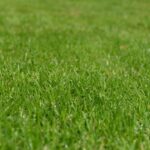As drought-conscious Californians look for ways to reduce their water consumption, business is blooming for the synthetic turf industry.
Chris Hayman of Earth Design Landscape in Redondo Beach said annual revenues have jumped from less than $300,000 in 2012 to more than $2.5 million in the first nine months of 2014.
Artificial grass supplier DuraTurf, whose West Coast headquarters is in Torrance, sold about 625,000 square feet of turf in Southern California last year and is on track to double those sales this year.
“It’s increasing exponentially right now,” said Timothy Dennis, DuraTurf’s West Coast sales manager.
Synthetic turf is also popular in Southwestern states such as Arizona, but Southern California represents “by far the biggest growth” in DuraTurf’s sales, Dennis said. He attributed the turf’s popularity to rising water rates and the Metropolitan Water District’s lawn removal rebate program, which offers South Bay residents at least $2 per square foot of grass removed.
According to researchers at UC Irvine’s Center for Hydrologic Modeling, the annual amount of water needed to maintain the average lawn each year is about 34,000 gallons, or about 670 bathtubs full of water.
But drought awareness isn’t the only reason people are switching to fake grass. The quality and appearance of synthetic turf has improved dramatically since the first major installation went into the Houston Astrodome in 1966. (“AstroTurf” is actually an eponym for the company that produced the synthetic turf field for the Texas football team.)
More complex fibers give 21st century turf a more realistic look, while ground-up rubber pellets from old tires provide a softer surface for synthetic sports fields.
Most synthetic turf produced in the United States comes from Georgia. After World War II, Georgia became a major player in the carpet manufacturing world. Dalton, Ga., which bills itself as the carpet capital of the world, used to be responsible for 70 percent of the nation’s carpet manufacturing, according to the 1999 book “Carpet Capital: The Rise of a New South Industry.

